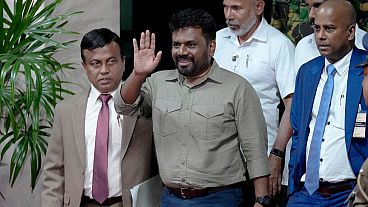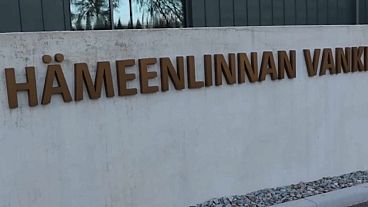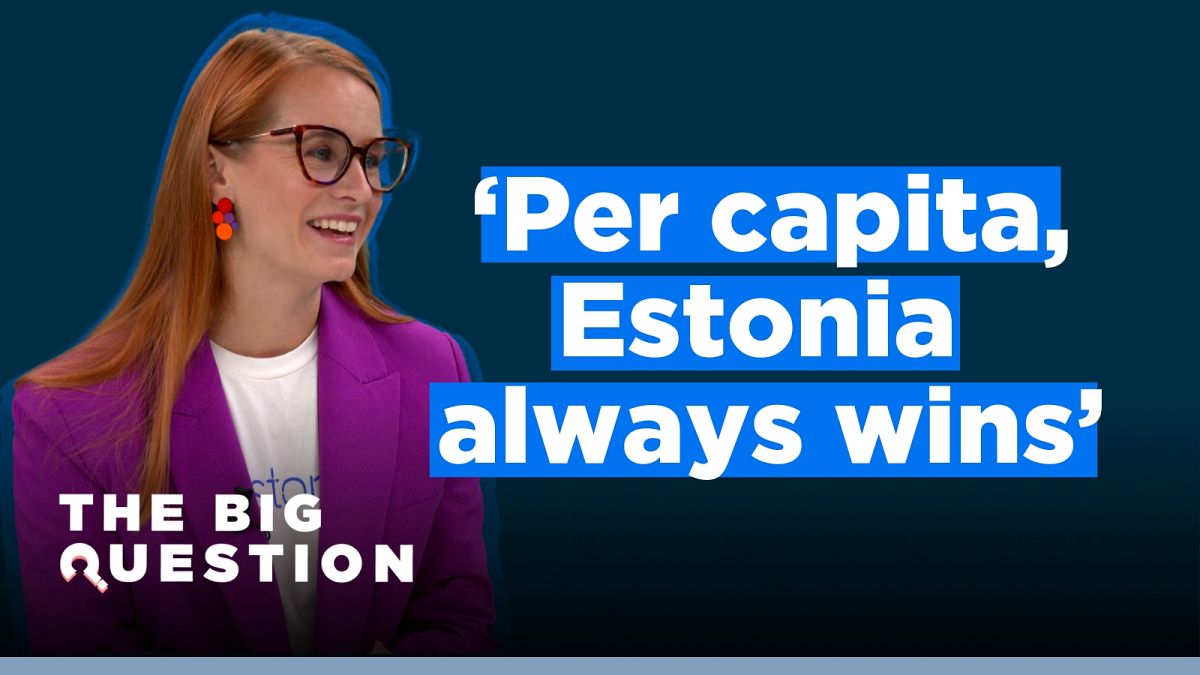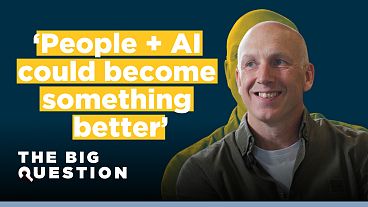Digitalisation has made the country a hub for tech unicorns, Sandra Saräv, Estonia's deputy minister for Economy and Innovation, explains how they did it.
When Estonia re-gained independence from the Soviet Union in 1991, it was left with an outdated infrastructure and a poor economy.
Estonia’s GDP was roughly €2,000 per capita. Politicians and government officials needed to find a way to compete with other nations whose economy hadn’t stagnated under five decades of occupation.
Today, Estonia's per capita GDP is about €28,000. A key factor in this extraordinary transition has been the country’s willingness to digitalise public services.
In this episode of The Big Question, Angela Barnes is joined by Sandra Saräv, Estonia's deputy minister for Economy and Innovation, to discuss how the nation uses digitalisation to compete on a global stage.
Why did Estonia’s services become so digitalised?
“Half jokingly we say that ‘we were too poor to afford anything else,’” Saräv explained.
In an attempt to minimise costs, Estonia skipped many of the steps taken by other nations in modernising public services.
For example, the country never had any physical bank cheques. The government instead went straight to an internet-based banking system. The process both saved money and improved efficiency.
A similar thing happened for most of Estonia’s other public services. Tax declarations were the first to go digital in 2000, with electronic voting happening shortly after. In the 2023 parliamentary election, half of the population voted online.
Only one major service remains fully physical.
“You can't get a divorce,” Saräv said. “For the physical act of getting married, you have to show up in person. However, the filing of the documents or giving in the proposal, this can be done digitally as well. But for a divorce, you still have to show up.”
How has digitalisation attracted new businesses?
Roughly every 10th Estonian owns their own company, and 94% are considered “micro-companies.” These businesses have fewer than 11 employees and a turnover or balance sheet total of up to €2m.
Saräv believes Estonia appeals to people looking to create new businesses due to the ease of registering online. For those who know the system well, the process can take less than 16 minutes.
“If you're a newbie, it would take you a couple of hours,” Saräv explained. “But, still, it's very efficient. You can fully declare taxes online, you can provide digital signatures for documents, you can acquire property, you can acquire new companies without ever having to show up physically.”
Estonia also has a number of start-ups. These include 10 tech unicorns, privately-held, technology-based start-ups that have achieved a valuation over $1bn (€899.2m).
This amount is the highest per-capita in Europe. Many come from something members of the Estonian government refer to as the “Skype Mafia”, Saräv said.
The term refers to founders of Skype, which was set up in Estonia. As the telecommunications company lost relevance, these founders went on to create new enterprises.
“They keep a very tight community,” Saräv added. “They have a founders association. So, they give advice to one another.”
How should other countries go digital?
Saräv had two recommendations for nations that wanted to digitalise public services. First, don’t start with everything at once.
“Most of the times that we have failed, we have failed when we have started with massive projects,” Saräv explained. “Go one by one. I mean, if you need to start digitalising, start with the services that people actually use the most.”
The second suggestion was to copy ideas from other nations. Instead of trying to be unique, replicate systems that work abroad.
An example Saräv gave for Estonia was its national ID card system, which it “copy-pasted” from Finland. The only difference was that Estonia made the electronic cards mandatory, while Finland did not.
“And they are the key access point to any public and private sector services,” she added.
What’s next for Estonia?
With electronic innovation comes rising energy costs. Moving forward, Estonia is looking at ways of reducing its carbon footprint while remaining competitive.
“Yes, doing things online has a much lower footprint than having piles of paper. But actually all the data warehouses, securing the data, it comes with a footprint,” Saräv said.
“So if everything is online in Estonia, we also need to figure out how to reduce electronic waste.”
Estonia’s 2030 Digital Agenda suggests the country is hoping to become the greenest digital government and set an example for the rest of the world.
Outside of environmental goals, the Estonian government is focused on making the country as competitive as possible, despite having had less time to develop independently. As Estonia is relatively small, innovation has often been one of the few paths forward.
“If you are a larger country, if you have more capital, it's easier to build the best systems possible,” Saräv explained.
“So, we've always had to innovate and be more inspired with what we can do with the resources that we have.”
The Big Questionis a series from Euronews Business where we sit down with industry leaders and experts to discuss some of the most important topics on today’s agenda.
Watch the video above for the full conversation with the Estonian government.















